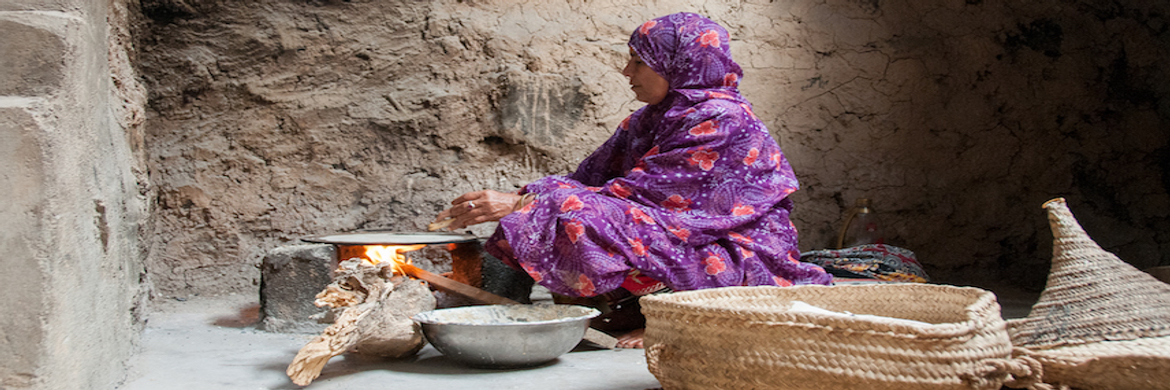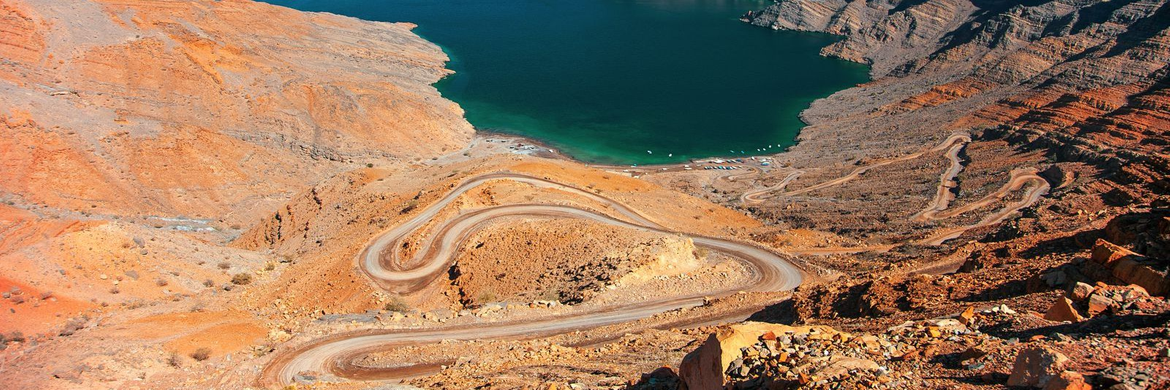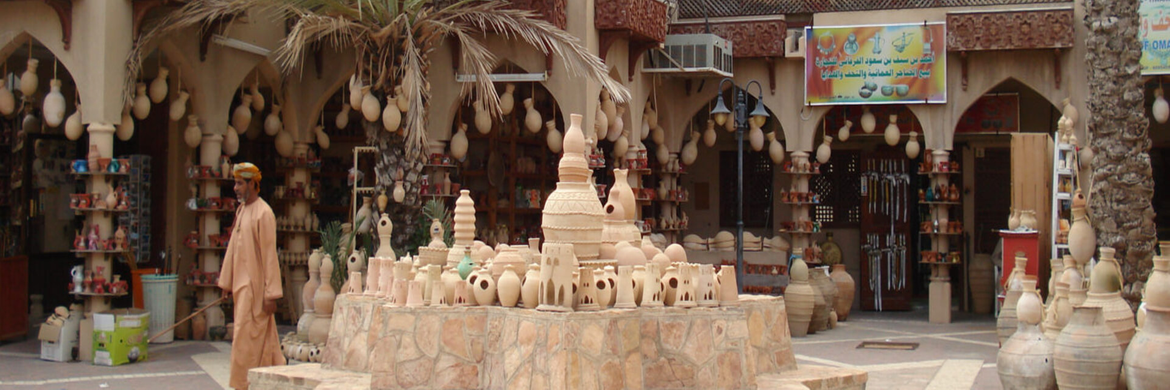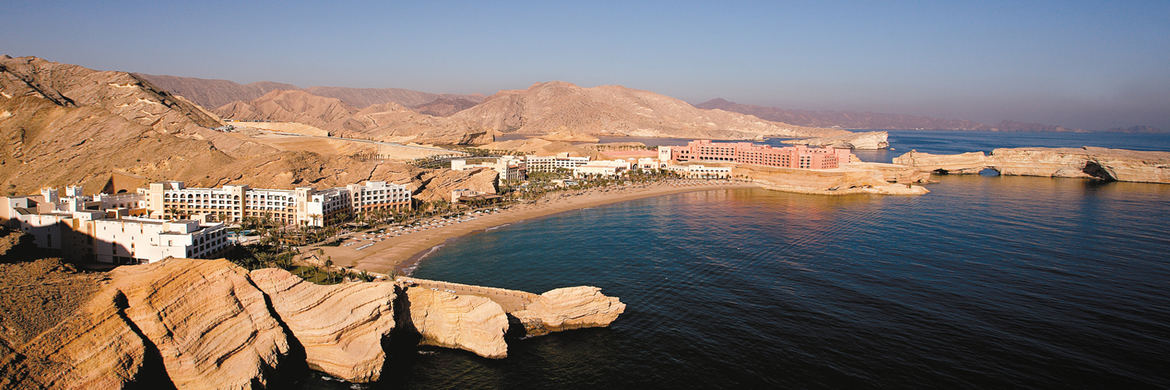Oman Escapes
Oman’s strategic location has played a major role in many campaigns and regional conflicts in this region. Oman overlooks the Arabian Sea, the Sea of Oman and the Arabian Gulf. It also controls the Strait of Hormuz, which is one of the most important facilities in the region, linking the Sea of Oman with the Arabian Gulf. The Strait of Hormuz is a gateway to all ships coming from the Indian Ocean and Arabian Sea.
Think Arabian Nights! Sindbad the Sailor 1001 Nights… Think Oman”
A Hidden treasure With a History dating right back to 3,000 BC, Oman’s unspoilt land could tell a thousand tales. It was the birthplace of the Queen of Sheba. the last resting place of Prophet Job and the home and port of the famous adventurer, Sinbad the Sailor. So it is no wonder that the Sultanate has such on abundance of hidden treasure- From the grand forts, exquisite palaces and mystical souqs of the capital Muscat, to the undulating dunes. Fresh water wadis and miles upon miles of unspoilt sandy beaches. Oman is just waiting to be discovered.
Natural Beauty
With natural geysers, vibrant coral reefs, soothing hot springs and mesmerising aquamarine wadis, Oman has been truly blessed by Mother nature. It is also home to the endangered Arabian Oryx and is one of only three places in the world where rare Greenback Turtle breed. The sight of thousand of baby Greenback Turtles scrambling into the water for the very first time is certainly one to behold.
The gem of Arabia
More reasons to discover enchanting Oman:
- Stunning natural landscapes
- White sandy beaches
- Chic, charming & extremely clean
- Rich in heritage, tradition & culture
- Warm, friendly people
- Modern & ancient Arabian architecture
- Luxury hotels
See the sight
Over the highest sand dunes. Through the deepest Wadis. To the most isolated beaches. Down the souq’s labyrinth of alleyways. Whereever our visitors want to go, our qualified and knowledgeable guides will take them there. Our list of tours and excursions cover everything from desert safaris and twilight cruises, to scuba-diving and deep-sea fishing for the more adventurous. We even provide a range of programme that cater to a variety of special interests, including archaeological digs, exploring the local flora or fauna or learning more about the history and culture of this ancient land. It is our innovative approach that has resulted in such a wide variety of tours being offered to our visitors, from family or adventure tours, to one of our more specialist options for the discerning traveller.
MUSCAT
With its gleaming bay fronting the Gulf of Oman in the north and set against the dramatic Western Al Hajar mountain landscape towards the south, Oman’s capital of Muscat is a port city like no other in the Middle East. The concave shorefront peering out across the water creates an image reminiscent of the French Riviera, whilst the old town’s imposing mosques, narrow winding streets and centuries-old souqs offer a reminder of the city’s long Islamic history. Muscat is also is city of contrasts, with an ever-expanding Central Business District and lively port area forming two of the main driving forces behind the country’s emerging economy. Although overlooked by many as a mere gateway to enter the country, Muscat deserves more time, with a sturdy list of cultural and historic sites providing ample reason to stay for that little bit longer.
ASIRAH ISLAND
This skinny island measuring just seven miles across and 60 miles from top to bottom is situated off the eastern coast of Oman, and is best known for being home to the Royal Air Force of Oman, as well as a number of fishing villages which are scattered around the rocky shoreline. Thanks to the abundance of sea turtles in the Gulf of Oman, Masirah Island also makes a popular spot for the creatures to lay their eggs, and as a result marine conservation activity has expanded in the area, alongside a steady rise in tourist numbers coming to see the turtles up-close. Only recently opened for tourists, Masirah is home to just one four-star hotel (although many visitors here choose to camp on the sand) and there’s also a kitesurfing camp catering for thrill-seekers looking to take advantage of the steady 20-knot winds during monsoon season.
NIZWA
Dramatically cocooned by one of the highest mountain ranges in Oman, the ancient city of Nizwa sits conveniently along a popular overland route from Muscat to some of the country’s most famous historical sites in the east. Thanks partly to its close proximity to the the capital (two hours away), as well as its wealth of impressive attractions, Nizwa enjoys the title of being Oman’s second-most popular tourist destination, with many visitors using it as a base for two or three days before heading off to Bahla, Jabrin and beyond. The town center itself is still relatively conservative, despite the ever-increasing rise in tourist numbers, so it’s wise to dress respectfully and observe traditional Muslim cultural norms. Often referred to as “The Pearl of Islam”, Nizwa has a range of both old and new souqs waiting to be explored, some interesting ancients forts and a long list of museums for an air-conditioned culture fix.
WAHIBA SANDS
This vast northwestern region of Oman is also referred to as The Sharqiya Sands or Ramlat al-Wahiba by locals, and covers 4,800 square miles of mostly uninhabited desert space. The area is famed for its stunning golden dunes – just as spectacular as the Sahara’s, albeit on a smaller scale. One of the main attractions here is the presence of the centuries-old Bedu people, who specialized in raising camels for organized races across the region (held annually from October to April.) The less conservative Bedouin lifestyle here also allows women to have a more active role in society, and they are instantly recognizable with their brightly-colored costumes, detailed masks and flowing robes. The dunes can only really be explored in 4x4s, and don’t expect any hotels for miles; bed down under the stars instead for a night to remember in the Omani desert.
ABAL AKHDAR
Translating to ‘green-mountain’ in Arabic, Jabal Akhdar takes its name from the abundance of greenery that grows in these higher altitudes. Part of the Al Hajar range, the route to the top starts around 45 minutes from Nizwa, and it’s here where you’ll also find the tallest peak in the entire country at nearly 10,000 feet above sea level.The vast and utterly spectacular region forms the geographical backbone of Oman, starting around 30 miles inland from the Gulf of Oman and running all the way to the tip of the Musandam Peninsular. Sultan Qaboos designated Jabal Akhdar a nature reserve in order to conserve its biodiversity. Thanks to the elevated altitude, the region has been extensively farmed for its abundance of vegetables and fruit which wouldn’t normally survive in the harsh desert heat down below. The region is known for traditional Damask rosewater extraction, honey bee breeding, and production of pomegranates, walnuts, apricots, black grapes and peaches.
KHASAB
Dubbed the “Norway of the East” thanks to its vast lakes and towering mountainous landscape, Khasab is the capital of Oman’s Musandam Peninsula that overlaps into the United Arab Emirates next door. The bustling port towards the north is a hub of activity and an icon of the city, with waterside eateries and traditional tea shops overlooking all the hustle and bustle. This port area is famous throughout the Middle East thanks to its thriving privacy trade; smugglers zip along the 35 miles of water to Iran in their modified fiberglass boats packed with US cigarettes, trading them for goats before making the short journey back to the port. This trade has been a long tradition of Khasab, and the additional income is generally welcomed by the locals. Tourist numbers are slowly creeping up too – partly thanks to a brand new highway that links up with Dubai in the East – and the old town centre has plenty in the way of attractions to keep the day trippers busy. Historical souqs still stand as the main places to do some bargain hunting, and popular boat trips cruise along the picturesque rocky shoreline around the Musandam Peninsular.
ZIGHY BAY
The spectacular Zighy Bay, located on the northern Musandam Peninsula of Oman, both combines and defines the best of the Middle East. From sandy beaches framed by crystal blue waters to rugged mountain landscapes and the famed Musandam Fjords, this unique corner of the country is filled with natural beauty in every crevice. Visitors can enjoy days filled with adventure and excitement, exploring beneath the sea, up in the sky, and over the mountains. Just a hop, skip, and a jump from Dubai, Abu Dhabi and the rest of Oman, Zighy Bay is the ideal spot for a weekend or weeklong getaway, to get off the grid and indulge in luxury services, wondrous landscapes, and adrenaline-filled activities that will have people coming back for more. One resort stands out above all others in Zighy Bay: Six Senses Zighy Bay beach resort. Guests here will be greeted with world-class dining and spa services, the perfect way to relax after a day out in the sun.
- 4X4 Drives – For adventure, excitement, and some amazing views, visitors can hop aboard a 4X4 for a fast-paced tour of the surrounding areas, from Zighy Bay to the scenic Sabatyn Plateau, along the mountainside to Wadi Al Bih, and through small, picturesque villages.
- Fjords Cruise – See what everyone is talking about: enjoy stunning views of the Musandam Fjords on a cruise through Haffa Bay. One of the best times of day? Sunset, where visitors can gaze at streaks of color framing the already-incredible landscape.
- Mountain Biking – Get those legs burning while mountain biking through the Hajar Mountains: visitors can check out the diverse flora and fauna on the rugged mountainside while riding up and down varied trails.
- Paragliding – Fly over Zighy Bay on the experience of a lifetime: those who dare can paraglide from the top of Zighy Mountain and across the Bay at nearly 100 feet in the air. Talk about a spectacular view!
- Snorkeling and Scuba Diving – Water lovers rejoice: Zighy Bay is home to spectacular coral reefs, rock formations, tropical fish and other underwater life for visitors to take in with their own eyes. Join a dive excursion or simply grab some snorkels and a mask – and don’t forget an underwater camera!
- 4×4 Off-Roading – Take the route east towards the Empty Quarter from Salalah and you’ll notice the paved tarmac roads slowly gets increasingly sandier, until you’re eventually completely immersed by the desert dunes in every direction. The only way to tackle the fine golden grains is in a 4×4 vehicle, and the hilly terrain makes for some pretty fun driving… although motion sickness tablets might be a good idea as they can reach up to 1,000 foot in height.
- Camping – The only real way to stay in this isolated desert is in camps; many opt to stay at some of the semi-permanent camp bases across the dunes, and others choose to pitch their own tents. Enjoying an alfresco evening dinner and drinks as the deep red sun sinks below the dunes is an experience to savored, and don’t forget to set your alarm the following morning to catch the spectacular sunrise over the horizon in the east.
- Umm al Samim Quicksands – A thing of nightmares for some, this well-known area of quicksand is found towards the eastern edge of the Empty Quarter desert in Oman, close to the Yemeni border. The sinking sands are formed by a low-lying basin which fills the ground with moisture and then drains it back after it becomes saturated.
- Mountain Towns – Some of the most remote settlements in Oman are scattered throughout the Al Hajar mountains. Examples include the 400-year-old ‘Al Hamra’ which has now developed into the size of a small town, as well as the ancient ‘Misfat al Abryeen’, a tiny village that retains an untouched feel with its series of stone huts clinging on to the mountain’s edge.
- Wadi Nakhr – Dubbed as Oman’s very own Grand Canyon, Wadi Nakhr (also sometimes referred to as Wadi Ghul) is one of the most spectacular points in the Al Hajar Mountains, presenting stunning views across the rugged landscape and down into the plummeting valley gorge below. The only way to reach the top is by 4×4, unless you don’t fancy the grueling climb to the top by foot.
- Cruises – Perhaps the most popular activity for tourists here are cruises; several well-established companies run full and half day trips, making their way along the pretty coastline and around Oman’s far eastern peninsular. Most of the companies can be found advertising around the port area and depart twice daily.
- Khasab Castle – This 17th-century castle was built by the Portuguese, and has been home to everybody from Sultans to prisoners over the last 300 years. Recently, the impressive stone structure was given a much-needed makeover and transformed into a regional museum. The building is open to all and a ticket costs 0.50 Rials.
- Khasab Dhow Port – Whether you’re coming to board a cruise, chill out at one of the waterside eateries, or just find curiosity in the city’s thriving pirate trade (whereby US cigarettes are smuggled over the water in exchange for Iranian goats), Khasab’s buzzing port is a must-visit for all.
- Al Jalali Fort – Etched into the rocky cliff-face overlooking Muscat’s port, this fort was originally built in the 16th century by the Portuguese to hold prisoners. After being converted into a museum, the fort has since closed, but you can still get up-close by taking the steep but short climb up the snaking path to the top – the views from here are well worth the extra effort.
- Mutrah Souq (market) – The major district of Mutrah was once a small fishing village; this trade has now all but vanished, paving way for the capital’s biggest and busiest market – or ‘souq’ – to dominate the region. The maze of narrow alleyways under the timber-roofed building conjure up an exciting mix of exotic sights and smells, all to the sound of the bustling crowds and hawkers squabbling over prices.
- Kitesurfing – During monsoon season, steady 20-knot winds blow across the island, providing excellent conditions for kitesurfing. Thanks to the sport’s recent rise in popularity in the region, there’s now an established kitesurfing camp which provides accommodation and equipment rentals.
- Turtle Watching – For centuries, the island has been an important hatching ground for sea turtles, but only recently have tourists become aware of this fact. Several beaches around the island have suitable conditions for the turtles to lay their eggs in the sand, and many nature-lovers choose to camp out on the beach for the best chance to get a glimpse of the turtles at night.
- Falaj Daris Irrigation System – Situated on the outskirts of town is this ancient irrigation system that dates back as far as the 5th century and, as a result, has been listed as a UNESCO World Heritage Site. Head here to see how the gravity-fed system still operates today, and explore the pleasant surrounding garden that has been recently renovated for passing visitors.
- Wadi Nakhr – Also referred to as Wadi Ghul – presents some breathtaking views across the country’s vast mountain landscape and down into the gorge which drops deeps into the valley below. A drive to the top is only possible in a 4×4, that’s unless you want to ditch your regular road car half way up and walk the rest of the way up on your own. The gorge makes a popular daytrip from the city, or as a stop off en-route, heading east from Muscat.
- Camel Racing – Most of the Bedouins found here are based around the settlement of Al Hulwah, an oasis not too far away from the desert border. The tribes train camels year-round to be raced at selected events held across the desert between mid-October and April.
- Sand Boarding – A fun way of tackling the dunes here is to take to the sand on boards, surfing the hilly terrain as if it were waves. Day trippers often bring their own modified snowboards or use makeshift sliders to shoot down the dunes.




